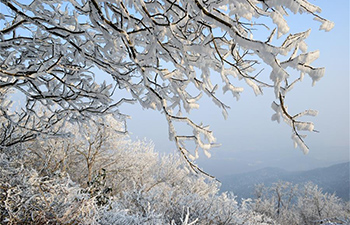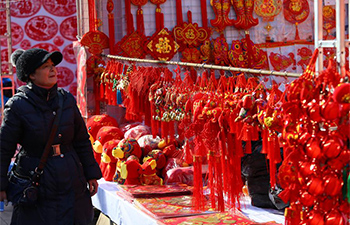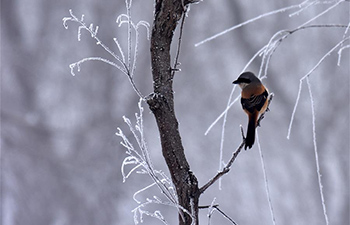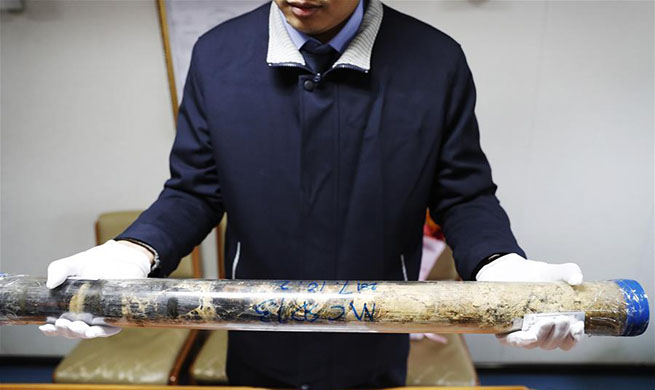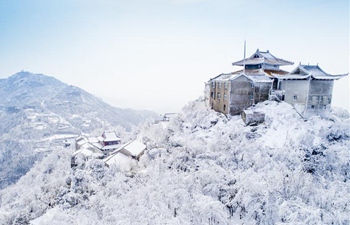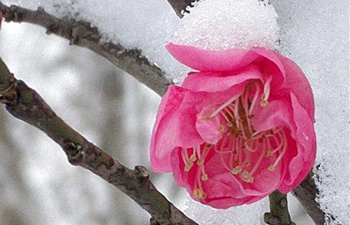WASHINGTON, Jan. 31 (Xinhua) -- Half of the world will have a special opportunity to enjoy the rare sight of a celestial trifecta Wednesday - "a super blue blood moon" which happens for the first time in 152 years.
ONCE IN A SUPER BLUE BLOOD MOON
According to U.S. space agency NASA, the Jan. 31 full moon is special for three reasons: It's the third in a series of "supermoons," when the moon is closer to Earth in its orbit -- known as perigee -- and about 14 percent brighter than usual.
It's also the second full moon of the month, commonly known as a "blue moon." Owing to the rarity of a blue moon, the term is used colloquially to mean a rare event as in the phrase "once in a blue moon."
The super blue moon will pass through Earth's shadow to give viewers in the right location a total lunar eclipse. While the moon is in the Earth's shadow it will take on a reddish tint, known as a "blood moon," said NASA.
The unusual overlap that happens "once in a super blue blood moon" is surely an exciting moment for scientists and sky enthusiasts, making #SuperBlueBloodMoon a trending topic on Twitter.
WHEN TO SEE IT
A global map of the Jan. 31 lunar eclipse on NASA's website shows that half of the world will have a chance to witness the rare event, weather permitting.
For those in the Middle East, Asia, eastern Russia, Australia and New Zealand, the "super blue blood moon" can be seen during moonrise in the evening of Wednesday, said NASA in a news release earlier this month.
For people living in North America, Alaska, or Hawaii, the eclipse will be visible before sunrise, it added.
"Set your alarm early and go out and take a look," said Gordon Johnston, program executive and lunar blogger at NASA Headquarters in Washington, in the release.
"Weather permitting, the West Coast, Alaska and Hawaii will have a spectacular view of totality from start to finish," Johnston added.
Moreover, people living in the other half of the world where the event is not visible need not fret. NASA Television and the space agency's website will livestream the rare lunar performance, beginning at 5:30 a.m. U.S. eastern time (1030 GMT).
WHAT SCIENTISTS CAN LEARN
The rare eclipse will give scientists a special opportunity to see what happens when the surface of the moon cools quickly, said NASA.
This information will help them understand some of the characteristics of the regolith - the mixture of soil and loose rocks on the surface - and how it changes over time.
"During a lunar eclipse, the temperature swing is so dramatic that it's as if the surface of the Moon goes from being in an oven to being in a freezer in just a few hours," said Noah Petro, deputy project scientist for NASA's Lunar Reconnaissance Orbiter at Goddard Space Flight Center in Greenbelt, Maryland.
"These studies will help us tell the story of how impacts large and small are changing the surface of the Moon over geological time," added Petro.




